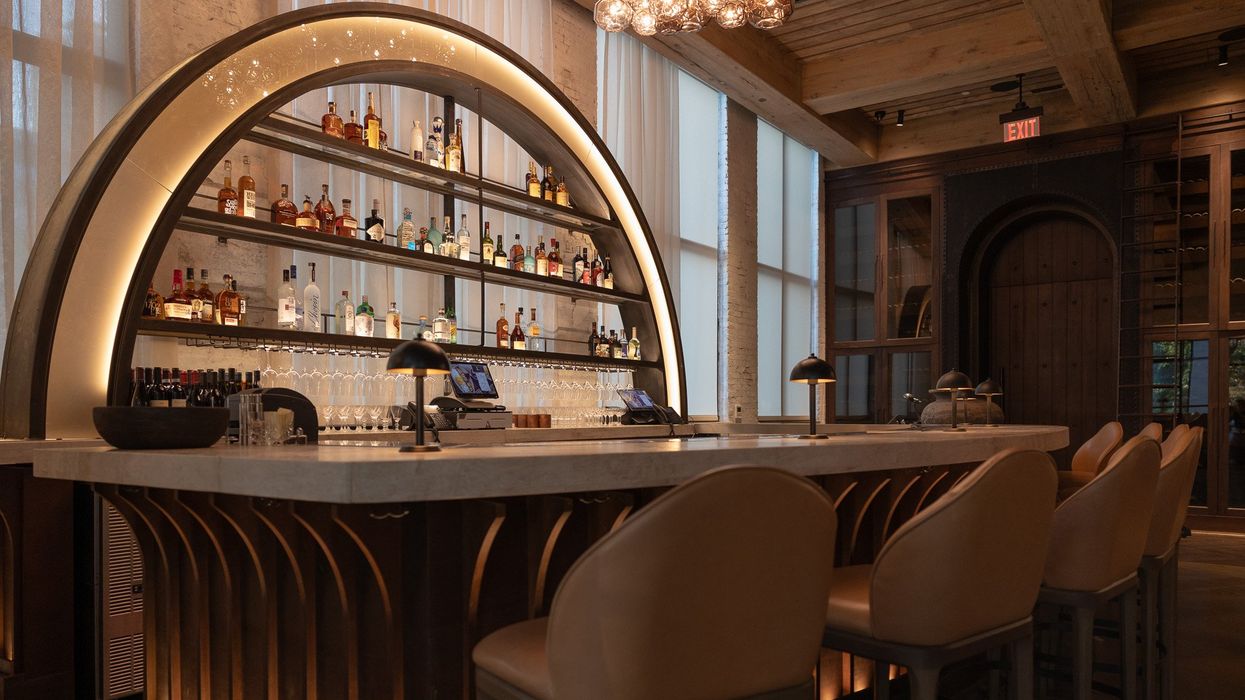At Rumi's Kitchen, Festive Holiday Feasts Are Filled with Warmth and Spice

The bar at Rumi's
THE 13TH-CENTURY poet Jalāl al-Dīn Muḥammad Rūmī wrote, “Respond to every call that excites your spirit.” A new dining destination on Post Oak called Rumi’s Kitchen is named after the wise teacher, and indeed promises to excite all the senses.
A sense of warmth is felt as soon as one enters the space, which is designed by The John Studio to feel as if you’re dining in a Persian home — a very fashionable Persian home, that is. The walls are exposed brick covered in plaster using a traditional Iranian technique and painted white, a combination that results in a rustic feel. The floors transition from hardwood in the entry to concrete in the main dining room, and the whole space is soaked in a warm glow from fixtures that are more art than lighting. Hanging from the tall ceilings, the lights are designed to look like a whirling dervish, another nod to Persian culture. The restaurant is anchored by a large, open kitchen, with a traditional turquoise-tile backdrop against which cooks are seen working with different types of unique stoves.
One of the faces that can be seen in the kitchen is chef Ali Mesghali. He moved from Iran to Los Angeles as a young boy where he started his career working in Persian restaurants as a teen. Now he co-owns five locations of Rumi’s — three in Atlanta and one in D.C. About Houston, Mesghali says, “It’s long been on our radar for growth given its celebrated diversity and incredible food scene. It is not only home to a sizable international community, but also draws visitors from around the world for business and pleasure.”
The menu is divided into “Taste” and “Feast,” the former portion featuring smaller dishes meant to be shared — think smoked-salmon-and-veggie-relish-topped hummus, or the melt-in-your-mouth lamb sausage. There’s also eggplant dip three ways: smoked, fried or roasted. You really can’t miss.
Meanwhile, the “Feasts” are different combinations of thoughtfully crafted meats or vegetables. Mesghali is particularly proud of his Wagyu Zabuton Kabob, which upgrades the traditional kabob to include Urfa chili spice, gilled shishito peppers, and red onion. There’s also kabobs of Chilean sea bass, duck or lamb.
The cocktail menu includes more Persian twists: The Maydan is a cognac cocktail with Persian tea bitters, while the house gin and tonic includes dragoncello tarragon liqueur.
As attractive as the food and drink are, it’s the pretty people who fill the scene-y space that bring to life a truly exciting spirit at Rumi’s.

Corn 'ribs'

Forbidden Fruit cocktail

A spread at Rumi's

Gifts of Beloved cocktail

Roasted Mushroom Hummusiya

S.S Poet cocktail

The wine wall
 Yvonne Chen
Yvonne Chen